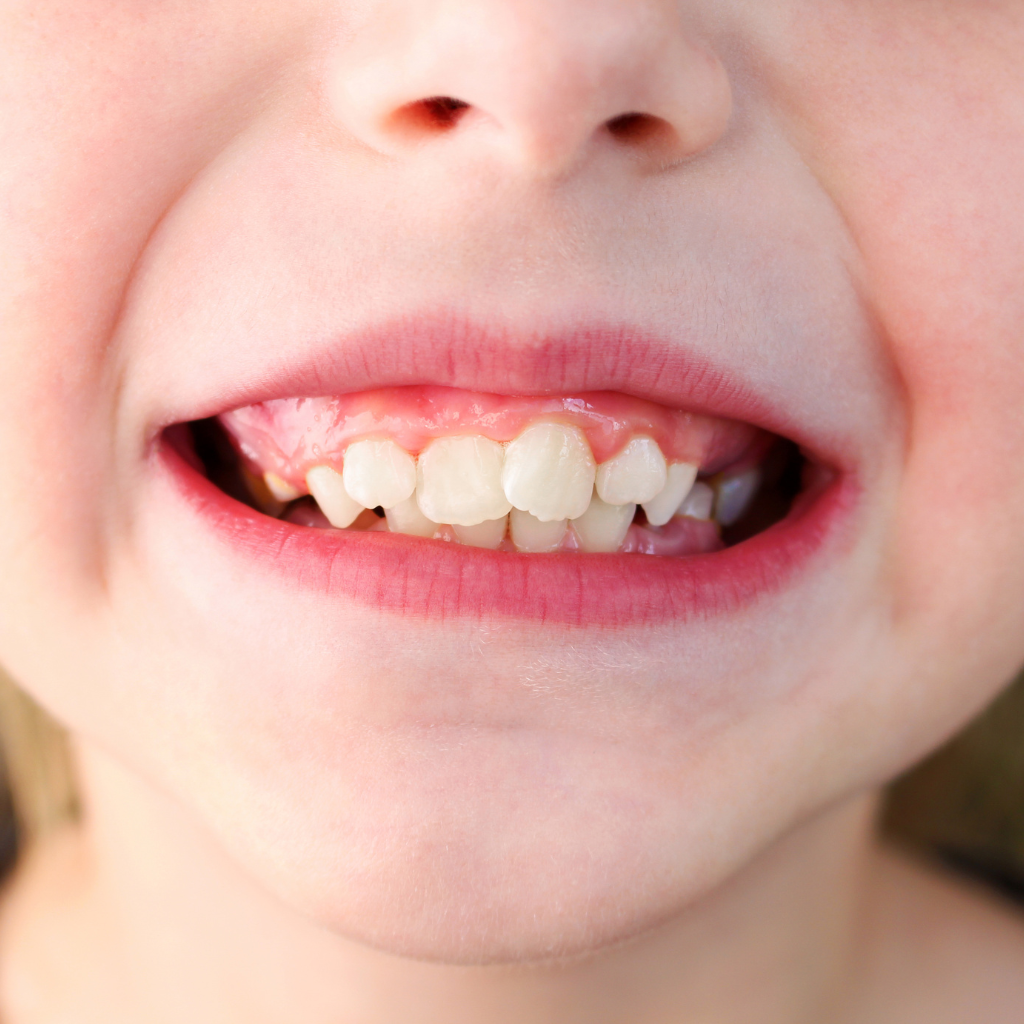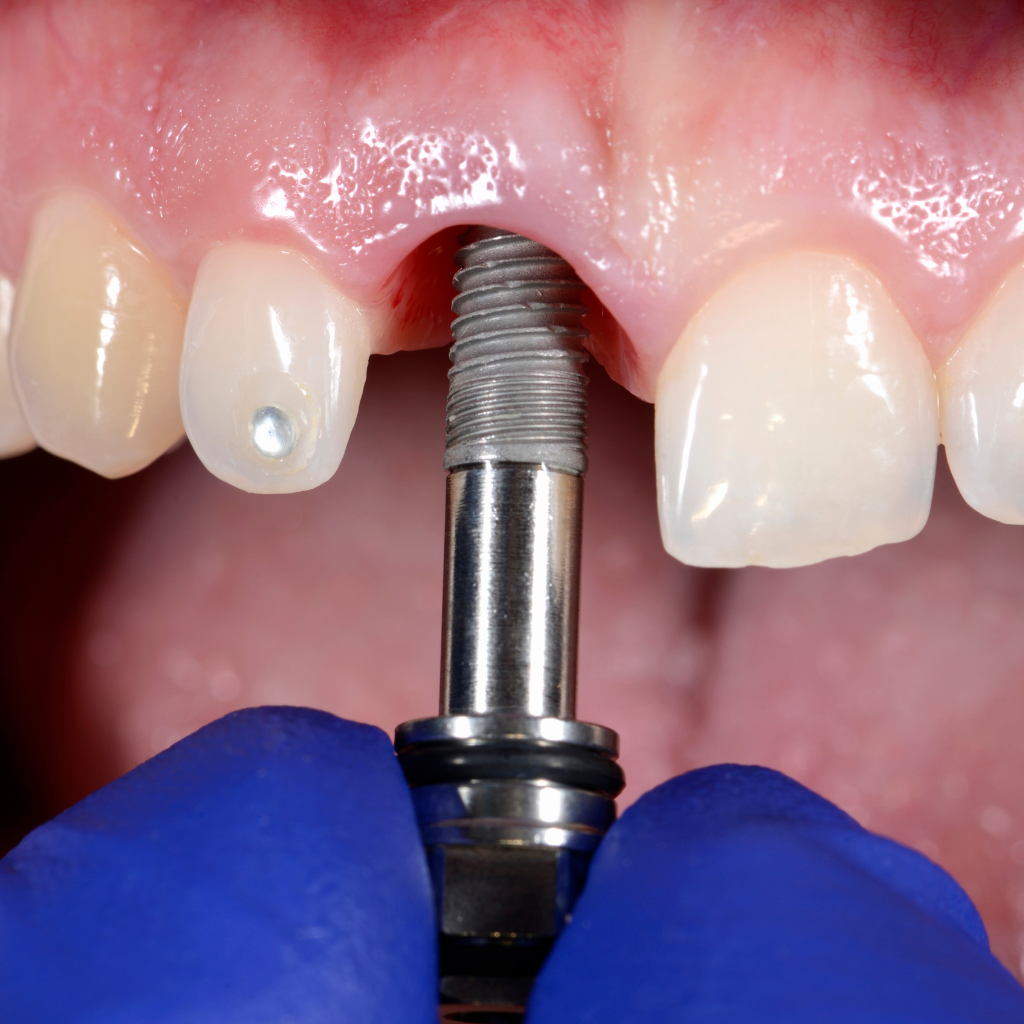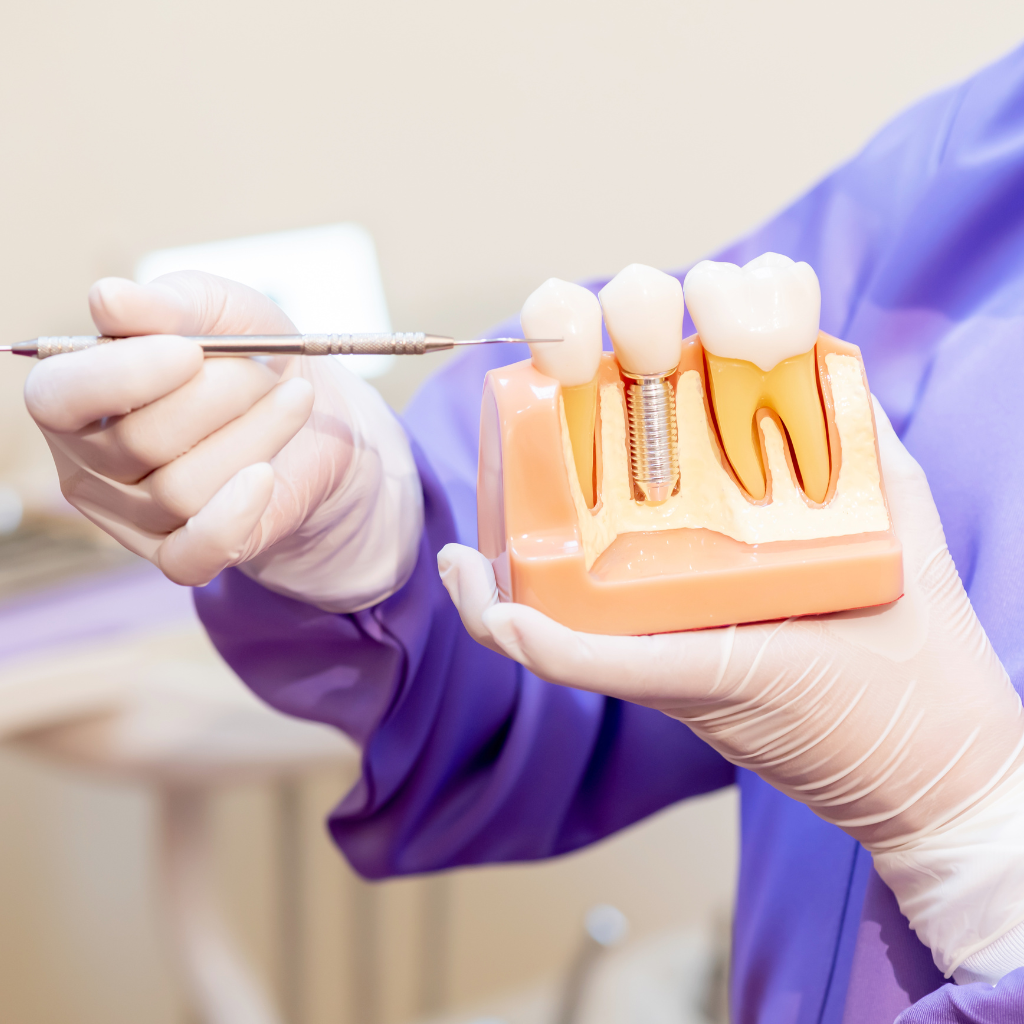Replacing crooked teeth with dental implants does not inherently fix alignment issues. Implants are designed for aesthetic and functional restoration of missing teeth, anchoring artificial roots into the jawbone. They prevent bone loss and stabilize oral structures. However, they do not correct malocclusion or inherently realign teeth; orthodontic treatments are required for such corrections. Adjunctive orthodontic strategies may be needed for best results. Learn how implants contribute to thorough dental solutions.
Key Takeaways
- Dental implants replace missing teeth but do not correct crooked teeth or malocclusion.
- Implants provide stability and prevent the shifting of adjacent teeth, promoting proper dental occlusion.
- Misaligned teeth may require orthodontic treatment before dental implants are considered for optimal results.
- Extraction of a misaligned tooth might allow for implant placement if necessary.
- Alternatives like braces or Invisalign focus on correcting alignment, while implants focus on replacing missing teeth.
Can Dental Implants Fix Issues Caused by Crooked Teeth?
Dental implants are prosthetic devices that replace missing teeth by anchoring into the jawbone, thereby providing a stable foundation for artificial teeth.
Crooked teeth can lead to a range of oral health issues, including misalignment, increased plaque accumulation, and periodontal disease.
While dental implants are effective in replacing missing teeth, their ability to correct issues caused by malocclusion is limited and may require adjunctive orthodontic treatment for thorough management.

What Are Dental Implants and How Do They Work
Understanding the role of dental implants involves recognizing their function as artificial tooth roots designed to anchor replacement teeth. Constructed typically from titanium, these implants are surgically placed into the jawbone, providing a stable foundation akin to natural teeth. Implant placement is a vital aspect of the tooth replacement process, particularly for addressing dental issues arising from missing or damaged teeth.
| Component | Material | Function |
|---|---|---|
| Dental Implant | Titanium | Acts as an artificial tooth root |
| Abutment | Metal | Connects implant to replacement tooth |
| Replacement Tooth | Porcelain | Mimics natural tooth in appearance |
For a single tooth, dental implants offer a viable tooth replacement option, ensuring functional and aesthetic restoration. By integrating with the jawbone, they mimic the natural tooth structure, addressing dental issues without compromising adjacent teeth.
How Do Crooked Teeth Affect Your Oral Health
Crooked teeth can considerably impact oral health, influencing both functionality and aesthetics. Misaligned teeth can lead to an array of complications:
- Dental Hygiene Challenges: Crooked teeth make brushing and cleaning your teeth difficult, increasing the risk of cavities and gum disease.
- Gum Disease Risk: Poor alignment can cause pockets where bacteria thrive, leading to tooth decay and gum disease.
- Jaw Pain: The uneven bite from misaligned teeth can contribute to jaw pain and temporomandibular joint disorders.
- Overall Oral Health: Crooked teeth can cause stress on other teeth and gums, exacerbating oral health issues.
Evidence-based research underscores that addressing these issues is vital for maintaining ideal oral health and preventing long-term complications.
Regular dental evaluations are recommended to manage and mitigate these risks effectively.
Can Dental Implants Address Issues Caused by Crooked Teeth
When considering whether dental implants can rectify complications caused by misaligned teeth, it is essential to evaluate their functional efficacy.
Dental implants serve as replacement teeth but do not inherently fix crooked teeth. The dental implant procedure involves replacing a tooth with an artificial tooth, necessitating sufficient bone density for successful integration.
While implants provide stability and support for surrounding teeth, they do not directly address the alignment issues of misaligned teeth. However, in cases where a misaligned tooth is extracted, an implant can be used to replace it.
To determine the best course of action, a thorough assessment of occlusion and alignment is necessary, focusing on the interaction between the implants and the existing dental structure.
How Do Dental Implants Replace Missing Teeth?
Dental implants serve as a robust solution for replacing missing teeth by surgically anchoring a titanium post into the jawbone, which acts as a substitute root.
Compared to dentures and crowns, implants offer superior stability and longevity due to their osseointegration process, where the implant fuses with the bone.
The benefits include improved oral function, enhanced aesthetic appearance, and the preservation of jawbone integrity, making them a preferred choice in restorative dentistry.
What is the dental implant procedure?
The dental implant procedure systematically replaces missing teeth through a multi-step surgical process that integrates artificial roots into the jawbone.
This method involves placing implants, where titanium posts act as a substitute for the tooth root. The procedure is designed for single tooth replacement or more extensive dental needs.
Here is a concise breakdown of the process:
- Consultation: Assess if the patient is a candidate for dental implants. Schedule your consultation today.
- Surgical Placement: Insert titanium posts into the jawbone to establish a stable foundation.
- Osseointegration: Allow time for bone to naturally fuse with the implant.
- Restoration: Attach a dental crown to the implant for functional and aesthetic completion.
For those considering this option, a consultation today is recommended.

How do implants compare to dentures and crowns?
Advancements in dental technology have expanded the options for replacing missing teeth, with dental implants, dentures, and crowns each offering distinct advantages.
Dental implants are a permanent solution, providing cosmetic and functional results that mimic natural teeth. They are particularly beneficial for patients who are good candidates, as they prevent bone loss by integrating with the jawbone.
Conversely, dentures are removable tooth replacement options that can replace multiple teeth but may not offer the same stability.
Crowns, typically used to restore damaged teeth, can be combined with implants for enhanced support.
The choice between these methods depends on individual needs and should be discussed in a dental clinic setting, evaluating factors such as bone density, oral health, and aesthetic goals.
Exploring Treatment Options for Crooked Teeth
In addressing crooked teeth, dental implants are typically not the primary intervention unless there is an associated loss of teeth, necessitating consideration of conventional orthodontic solutions such as Invisalign or metal braces.
These alternatives offer evidence-based efficacy in correcting misalignment by applying controlled forces to reposition teeth over time.
However, in cases where extensive orthodontic treatment is required, especially without tooth loss, traditional orthodontic methods may prove more advantageous than implants.
How do implants work for misaligned teeth?
Dental implants can help replace missing or severely crooked teeth, ultimately contributing to a more aligned dental structure.
While they do not directly straighten crooked teeth or correct misaligned teeth, implants serve vital roles in complex restorative plans.
- Replace Teeth: Dental implants replace missing teeth, which may aid in aligning adjacent crooked teeth.
- Stability: They provide stable anchorage, which is essential for teeth straightening procedures.
- Prevention: Prevent shifting of remaining teeth, which can worsen misalignment.
- Candidate Suitability: A good candidate for dental implants can achieve improved dental function and aesthetics.
Though dental implants and treatment of crooked teeth may not directly overlap, they are integral to thorough dental rehabilitation.
What are the alternatives like, Invisalign or metal braces?
While dental implants play a significant role in dental rehabilitation, addressing misaligned teeth often requires alternative treatments.
Orthodontic treatment options such as metal braces and Invisalign are particularly effective for correcting crooked and crowded teeth. Traditional metal braces apply consistent pressure to align teeth over time, making them suitable for complex cases.
Invisalign, a modern alternative, employs clear aligners that are less noticeable and can be removed, offering flexibility for patients.
Both methods are integral to dental services that aim to correct alignment issues, unlike dental implants, which are primarily used to replace single or multiple missing teeth.
The choice between these treatments depends on the specific needs of the teeth and the desired outcome of the orthodontic procedure.
Are there cases where orthodontic treatment is better
When considering the ideal approach for correcting crooked teeth, it is essential to evaluate the specific dental conditions and desired outcomes.
Orthodontic treatment can be more suitable than replacement with dental implants in certain scenarios.
Crooked teeth can lead to various issues, and a dentist specializing in general dentistry will assess these factors:
- Severity: Mild to moderate misalignments may be corrected without the need for dental implants.
- Growth: Young patients with developing jaws may benefit more from orthodontics.
- Functionality: Preserving natural tooth structure is often preferred when functionality is not compromised.
- Cosmetic Goals: Orthodontic treatment can realign teeth to achieve desired aesthetics.
Unlike dental implants, orthodontics focuses on repositioning existing teeth, providing a solution tailored to the patient’s unique dental anatomy.
What are the Benefits of Dental Implants?
Dental implants are a beneficial intervention for improving oral health by providing stability and functionality comparable to natural teeth.
Research indicates that they can positively influence the jawbone by preventing bone resorption and maintaining structural integrity.
In addition, dental implants are regarded as a cosmetic solution that effectively restores the aesthetic appearance of a patient’s smile, aligning with contemporary standards of dental aesthetics.
How do implants improve oral health?
Although often perceived primarily as a cosmetic solution, dental implants offer significant benefits for oral health by providing a stable and durable foundation for artificial teeth.
Dental implants integrate seamlessly into dentistry practices, serving to replace missing or damaged teeth with implants that function like a natural tooth. They are used to fix crooked teeth and can support both a single tooth implant and multiple teeth.
The benefits are substantial:
- Stability: Implants anchor crowns, ensuring they remain securely in place without shifting.
- Durability: Dental implants are designed to last, reducing the need for frequent replacements.
- Oral Hygiene: Unlike veneers, implants do not compromise oral hygiene, facilitating easier cleaning.
- Preservation: Implants prevent adjacent teeth from shifting, maintaining the integrity of the dental arch.
Can implants affect the jawbone positively?
Implants can profoundly benefit the jawbone, primarily through the process of osseointegration, where the titanium post of the implant fuses directly with the bone tissue.
This integration prevents bone resorption, a common issue following a lost tooth. Dental implants consequently maintain jawbone integrity by replacing the root structure, providing the necessary stimulation for bone maintenance.
When dealing with crooked teeth, strategically placed implants can replace these teeth, enhancing not only dental alignment but also jawbone health.
Getting dental implants to support an entire arch of teeth guarantees even distribution of biting forces, further promoting bone health.
The best dental practices recommend various types of dental implants based on individual needs, guaranteeing ideal outcomes for jawbone preservation and functional restoration.
Why are they considered a cosmetic solution
Aesthetics play a significant role in the appeal of dental implants as a cosmetic solution, as they offer a lifelike appearance that closely mimics natural teeth.
When patients have teeth removed due to crooked teeth or broken teeth, dental implants replace the missing tooth, effectively addressing dental issues without the need for braces. This intervention is particularly beneficial for lower teeth alignment and other complex dental configurations.
The benefits of getting dental implants as a cosmetic solution include:
- Natural Appearance: Dental implants are designed to look and function like natural teeth.
- Durability: With proper care, they can last many years.
- Bone Preservation: They prevent bone loss in the jaw where teeth are missing.
- Improved Oral Health: They do not compromise the health of adjacent teeth.
What is the Role of Cosmetic Dentistry in Replacing Teeth?
Cosmetic dentistry offers a range of solutions, such as veneers and crowns, which are indicated when immediate aesthetic improvements are desired without altering tooth alignment considerably.
Unlike traditional braces that focus on repositioning teeth over time, cosmetic procedures prioritize the enhancement of visual appearance.
When dental implants are placed, they provide both structural integrity and improved aesthetics, contributing to a natural and visually pleasing dental restoration.
When should you consider veneers or crowns?
When might one consider veneers or crowns as alternatives to dental implants for crooked teeth?
Veneers and crowns may be suitable for individuals whose dental issues don’t require full replacement solutions, such as dentures or multiple implants.
Consider veneers or crowns if:
- You’re missing a tooth: If the missing tooth is not impacting structural integrity, a crown might be sufficient.
- Teeth without severe misalignment: Minor cosmetic adjustments can be achieved with veneers rather than braces.
- Presence of baby teeth: Retained primary teeth can be covered with crowns for improved aesthetics.
- Need for fewer implants: For those requiring only four to six implants, veneers can complement existing teeth for a uniform appearance.
These options provide aesthetic benefits without the need for extensive intervention like dental implants.
How does cosmetic dentistry differ from traditional braces?
While traditional braces utilize mechanical force to reposition teeth over time, cosmetic dentistry employs a variety of techniques that focus on the immediate enhancement of dental appearance.
Traditional braces are primarily designed for functional correction of malocclusion, requiring extended treatment durations, often spanning years.
In contrast, cosmetic dentistry offers solutions such as veneers, bonding, and crowns, which focus on the visual correction of misalignments and aesthetic imperfections, often within a few visits.
These procedures do not typically alter the underlying tooth position but instead mask irregularities.
The choice between these two approaches depends on clinical objectives, the extent of misalignment, and patient preference for treatment duration and outcomes.
What are the aesthetic outcomes of placing implants?
Dental implants are a sophisticated solution that provides significant cosmetic benefits, owing to the precision in design and placement. They guarantee a natural appearance and seamless integration with existing teeth.
The aesthetic outcomes are remarkable:
- Natural Appearance: Implants mimic the color, shape, and contour of natural teeth, guaranteeing a harmonious smile.
- Preservation of Jaw Structure: By preventing bone loss, implants maintain facial structure, avoiding the sunken appearance that can occur with missing teeth.
- Alignment Support: Implants can be strategically placed to support proper dental alignment and spacing.
- Longevity and Stability: With proper care, implants provide a long-lasting solution, sustaining aesthetic appeal over time.
These outcomes underscore the transformative role of implants in cosmetic dentistry.

Conclusion
In conclusion, while dental implants are an effective solution for replacing missing teeth, they do not directly address misalignment issues caused by crooked teeth. Orthodontic treatments, such as braces or clear aligners, are typically recommended to correct alignment before considering implants. The integration of dental implants within an extensive treatment plan can enhance oral functionality and aesthetics, as evidenced by clinical studies. Consequently, a multidisciplinary approach combining orthodontics and cosmetic dentistry is essential for the best outcomes in addressing crooked teeth.


